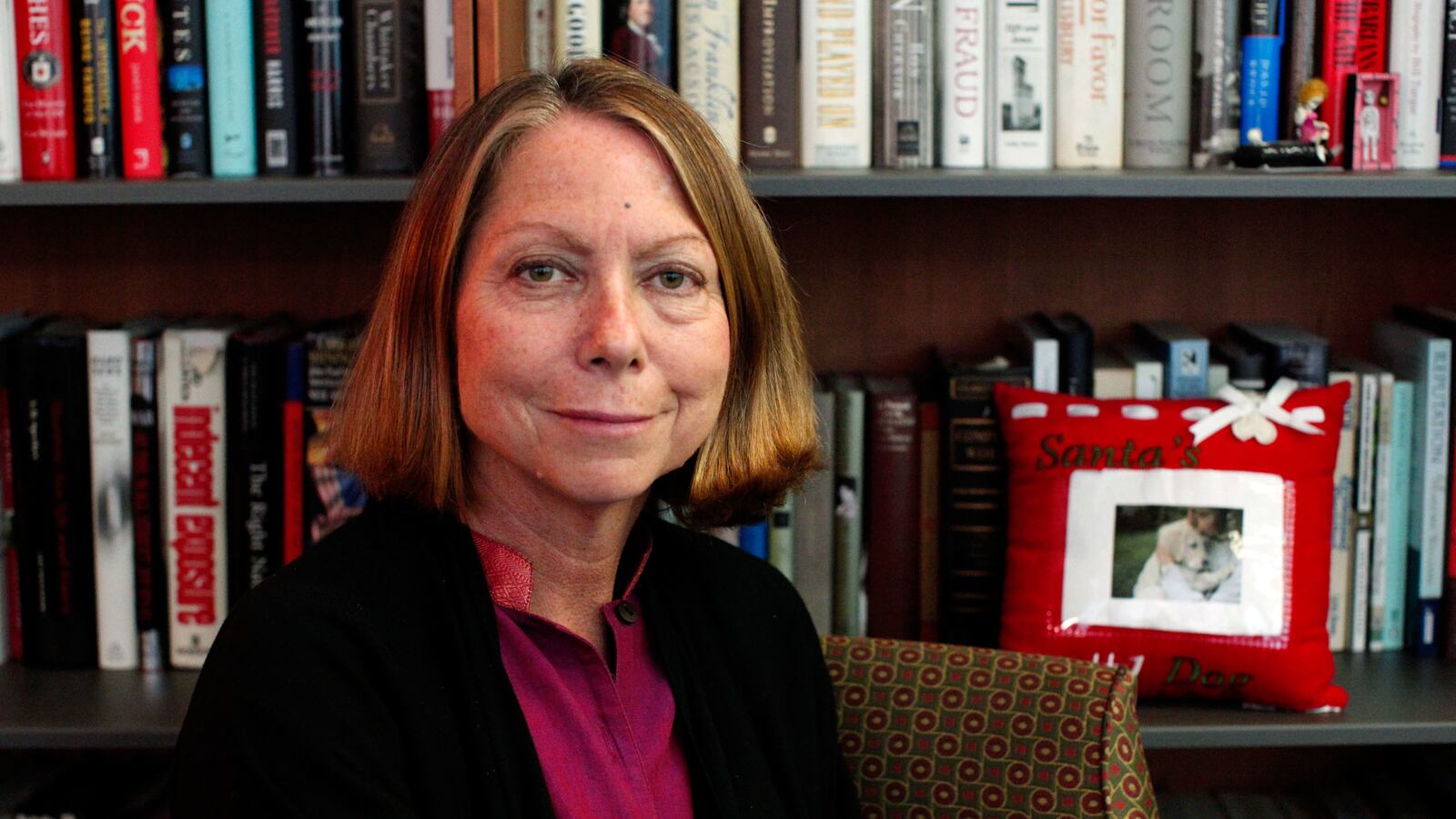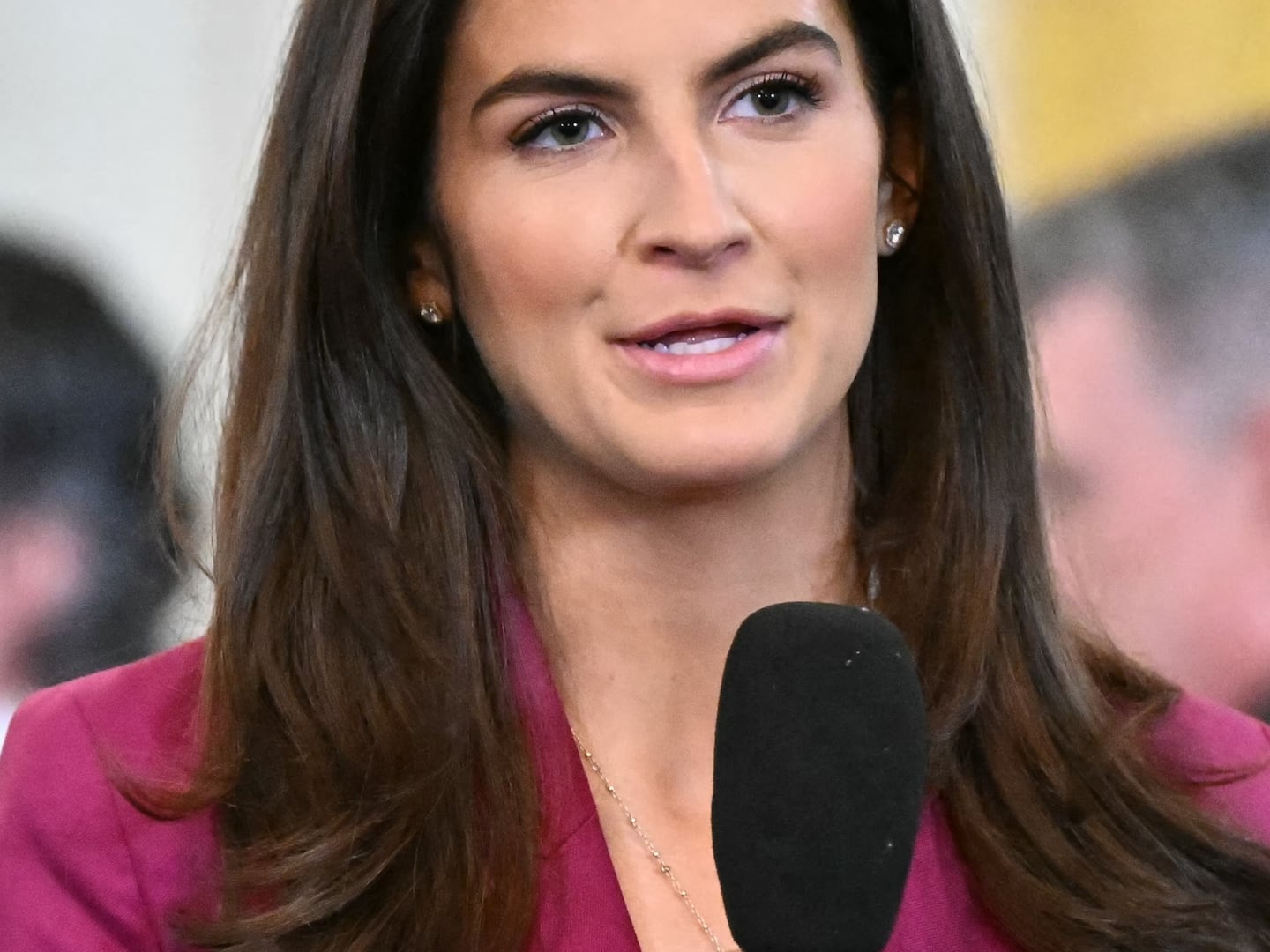Jill Abramson is very smart, which allows her to embrace two opposing ideas at the same time.
The evidence of that quality emerged, after two months of enforced silence, during a week in which she has made so many media appearances that one could be forgiven for thinking she’s either running for office or selling a product (most likely herself, as she prepares to teach narrative nonfiction at Harvard in the fall).
The 60-year-old Abramson, the first woman to serve as executive editor of The New York Times—and, as of May 14, the first woman to be fired from that job—put the mind-bending contradiction on display most starkly in a new interview with Yahoo global news anchor Katie Couric.
Having shown up for her one-on-one in faded jeans and a casual top, she also revealed she’s gone back to being a lowly reporter, starting work on an undisclosed investigative project (for the nonprofit ProPublica news organization, one hears), and she also talked about disparities in cultural gender perceptions that probably worked in her disfavor. It was Abramson’s most illuminating interview yet, as much for what she didn’t say as for what she did.
Contradictory Idea No. 1: “I have high standards. I push very hard for the reporters and editors who work for me to get the real story, to get what I always call the story-behind-the-story. And I think a lot of people who’ve worked for me found that inspirational. Some people didn’t like it. That is how it is at every news organization that makes a difference, I think.”
Contradictory Idea No. 2 (when Couric kept asking for the story-behind-the-story of Abramson’s highly public termination): “There are certain episodes in the life of any big news organizations that do become interesting moments to dissect, and this was one that certainly got dissected…It’s just at this point in time I don’t really see what’s in it to do yet more autopsy on what happened. I just see nothing positive in that…Now we’re, like, really in the grassy knoll, Katie, and I’m not gonna jump in there with you.”
An Obama White House spin doctor—the sort of slippery government mouthpiece Abramson has spent her distinguished career holding to account—couldn’t have dismissed Couric’s line of inquiry with more elegant stonewalling.
It’s quite possible that Abramson, who didn’t respond to an email seeking perspective on her public reemergence, would appreciate the irony—if not immediately, then on reflection. After all, in the end, even journalists who, like Abramson, pride themselves on being “truth-tellers” have a need to keep some secrets—what Bill and Hillary Clinton used to call their “zone of privacy.”
So Abramson—in the midst of a juggernaut that included a Q&A with Cosmopolitan, a radio chat with Pat Kiernan and Rita Cosby, and an appearance with Fox News’s Greta Van Susteren—declined to perform an autopsy on the incident that, by Times publisher Arthur Sulzberger Jr.’s account, prompted her termination: namely, Abramson’s alleged blindsiding of Dean Baquet, her managing editor and now successor as executive editor, concerning her attempt to recruit The Guardian’s Janine Gibson, a Brit, as Baquet’s co-equal on the masthead.
It remains one of the more baffling episodes of the entire saga, given that Abramson clearly realized that Baquet, understandably, would have been less than enthusiastic about Gibson’s co-equal title; Abramson had even reached out to New York Times Co. CEO Mark Thompson for his advice on how she should broach the subject with Baquet and try to get his assent. That conversation apparently never happened, and Baquet went ballistic with Sulzberger after Gibson, unaware of his ignorance, mentioned the plan over lunch.
Inside baseball, to be sure, yet because of the highly public nature of Abramson’s firing from the top perch in American journalism, and her position as a groundbreaking role-model for women, it’s a matter of legitimate interest. According to Sulzberger, Abramson had been alerted that she needed to brush up on her management skills and had even worked with an outside executive coach to improve her communication with colleagues.
“I didn’t work with this coach for very long,” she told Couric. “I did learn some things. And, you know, I didn’t really have time to employ some of the techniques and the suggestions that she made…The coach watched me conduct some meetings, and she did point out, like, a few examples where I might have appeared to have not listened well enough…And, you know, once she pointed it out it was like, ‘Oh, yeah, that’s probably true.’”
At one point, Couric asked: “Some of the adjectives that have come out about your style…mercurial, brusque, tough, belligerent—people complained you played favorites, that you berated people publicly. And when you heard that, what did you think? Did you think, that’s not really me? Or, that’s accurate? Or what?”
Abramson replied: “Well, I think all of the adjectives that you just read off—I can scarcely think of an executive editor of the Times that wasn’t described in the same way. You know, I think that women are scrutinized and criticized in a somewhat different way, and that certain qualities that are seen in men as being the qualities of a leader…are somehow not seen in as attractive a light when a woman is involved. And I’m hardly, you know, the first person to observe that. You know, I can think of a variety of women in all kinds of fields, including the political arena that you and I have both spent a goodly portion of our lives covering, who believe that there is something of a double standard.”
Couric followed up: “Do you think a double standard was at work at the Times?”
“It’s possible,” Abramson said. “I mean, I don’t see gender as being, you know, the whole explanation, by any means, of what happened. But it’s somewhat irksome to me to see so much focus on the issue of why was I fired. I mean, first of all, let’s be honest. How many people in the real world, like, really care about why Jill Abramson lost her job?”
Quite a few, it seems, judging by her media blitz.






